U.S. Immigration News
Get updates on the latest in U.S. immigration news!
Trends in Global Immigration
Understanding trends in global immigration.
Last Updated January 15, 2020.
Every year, millions of people leave their home countries and move to a new one. They do so for numerous reasons; perhaps they're seeking adventure, economic opportunity or a better quality of life for themselves and their children. Others seek refuge from political turmoil in their homeland.
No matter the reason, we can examine their numbers to discern trends in global migration. What can be inferred about immigration to the U.S. and abroad — and what can be expected as we get move into the last part of 2017 and beyond? That's what this article aims to answer. Today we're looking at the current trends in global migration.
Relevant terms:
Before we look at the these trends, let's define some common terms
Migration: The process of moving across a border with the goal of taking up permanent or semi-permanent residence.
Migrant flow: The number of people migrating within a specific time frame.
Migrant stock: The total number of people residing in the country that is not the one in which they were born. This is also known as a country's "foreign-born population."
International migration: The act of moving from one country to another.
International migrant: Someone who has been living for a year or more in a country other than the one they were born in.
International Migrants by the Numbers
This chart from the United Nations Population Division breaks down the total number of people living in a country in 2015 other than the one in which they were born. The 25 countries that are home to the largest groups of migrant stock are:
- United States
- Germany
- Russian Federation
- Saudi Arabia
- United Kingdom
- United Arab Emirates
- Canada
- France
- Australia
- Spain
- Italy
- India
- Ukraine
- Thailand
- Pakistan
- Kazakhstan
- South Africa
- Jordan
- Turkey
- Kuwait
- Hong Kong SAR, China
- Iran, Islamic Rep
- Singapore
- Malaysia
- Switzerland
U.S. - Global Leader in Immigration by Absolute Number

With approximately 46.6 million migrants, more people migrate to the United States than any other nation. However, that's just absolute numbers; while the U.S. has the most immigrants in the world, that makes up only 14 percent of its population. This "immigrant share" is much lower than the percentages seen in many Middle East countries including the United Arab Emirates, Qatar and Kuwait, where approximately three out of four people are international migrants.
In addition, 28 percent of Australia's population is foreign born and 22 percent of Canada's is foreign born. So while the U.S. tops the list in absolute numbers, these countries have a greater share of their population that was born in a different country.
Other Countries Leading Global Immigration

In absolute numbers, Germany was the second most popular destination country for international migrants, followed by the Russian Federation.
As a percentage of the country’s population, the numbers are highest in the following Middle East countries:
- International migrants make up a whopping 88.4 percent of the total population in the United Arab Emirates
- International migrants make up 75.7 percent of the total population in Qatar
- International migrants make up 73.6 percent of the total population in Kuwait
Is migrant flow increasing?
In terms of absolute numbers, yes — the numbers continue to climb. But as a share of the global population, the numbers budge only slightly. Let's take a look:
- The absolute numbers of international migrants has grown from approximately 79 million in 1960 to almost 250 million in 2015, a 200 percent increase. So by sheer numbers, there are far more international migrants today.
- But by percentage of the world’s population, international migrant numbers today are only slightly higher than 1960 numbers. The world population in 1960 was about 3 billion; in 2015, that number was 7.3 billion. When you calculate these ratios, you find that in 1960, 2.6 percent of the global population did not live in their birth countries; in 2015, that figure rose only slightly, to 3.3 percent.
Trends of note
1. The Mexico-U.S. migration path: Net flows are reversing
One of the world's biggest pathways for international migration has always been from Mexico to the United States. As of 2015, about 12 million Mexico-born people were living in the U.S. But as Pew Research notes, these numbers are reversing; more Mexican immigrants have returned to Mexico from the U.S. than have migrated here since 2009.
2. India to the Middle East becomes a major pathway
Another notable migration path is from India to the UAE. As of 2015, almost 3.5 million India-born people lived in the UAE. This number indicates a major trend still for years to come: The number of Indians living in the Middle East has grown from 2 million in 1990 to more than 8 million in 2015.
3. Nearly 1 in 5 migrants live in the world's top 20 largest cities
And the percentages of international migrants living in these cities is notably high. For example: 33 percent of the total population of Sydney, Auckland, Singapore and London is international migrants; and 25 percent of the total population of Amsterdam, Frankfurt and Paris is international migrants.
Global Refugees & Asylum-Seekers
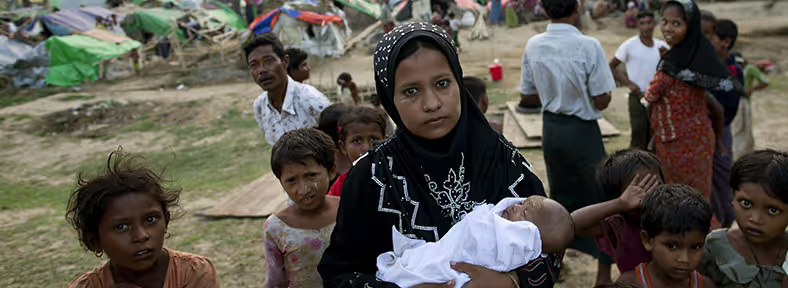
Trends to note here include:
- The number of people who were forcibly displaced in 2015 was the highest it's been since World War II. Worldwide, an astounding 15.1 million people were considered refugees. This huge number is largely attributed to the conflict in Syria, where about 8.6 million people were displaced just in 2015.
- Germany was the single largest recipient of worldwide refugees in 2015 — nearly 442,000 asylum-seekers moved to that country that year. If you factor out this large inflow of refugees, Germany still overwhelmingly holds the number 2 spot for countries having a foreign-born population. More than 12 million people came to Germany in 2015.
- Worldwide, the number of people seeking asylum grew dramatically from 2014 to 2015, with 558,000 applications pending at the end of 2014 to 3.2 million pending asylum applications globally by the end of 2015.
- The European Union received 1.2 million asylum applications in 2015, more than double the asylum applications filed in 2014. This is attributed to record numbers of asylum seekers from Syria, Afghanistan and Iraq.
- A third of the people who filed for asylum in the EU were minors; tragically, one in 4 of this group was judged to be unaccompanied by an adult.
- The majority of asylum seekers look to neighboring countries to host them, however, even if that host country is a developing country itself. For example, most of the Syrian refugee population in 2015 lived in Turkey (2.2 million), Lebanon (1.2 million) and Jordan (almost 630,000).
- The world is facing a new global refugee crisis in Southeast Asia. As of October 2017, 800,000 forcibly displaced Rohingya people from Myanmar have poured into Bangladesh. They are escaping what UN human rights officials are calling "a textbook example of ethnic cleansing."
American & European views on their migrant populations
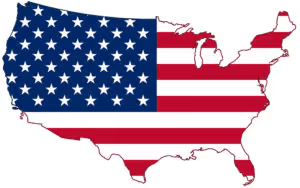
What do Americans think of immigrants?
According to a 2016 Pew study:
- 63 percent of U.S. adults felt that immigrants strengthen the country through their hard work and talents
- 27 percent feel immigrants are a burden on the country by taking jobs, housing and health care
This is a reversal of a similar study conducted in the 1990s, when 63 percent of respondents said immigrants were a burden on the U.S. and only 31 percent believed immigrants helped the country.
Perhaps unsurprisingly, certain groups were found to hold more favorable views of immigrants than others. For example, Democrats were more likely than Republicans to say immigrants benefit the U.S., and younger people held more positive views than older people.
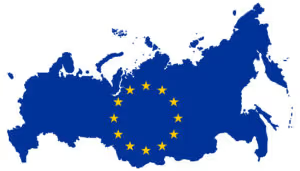
What do Europeans think of immigrants?
The influx of refugees in Europe has deeply divided people in the region. In a 2016 study of 10 European countries, it was found that:
- Half or more of the adults in eight out of the 10 nations fear that refugees will boost the chances of terrorism in their countries
- Half or more of the adults in five of the 10 countries believe refugees will harm their economies by taking jobs and social benefits
- Perhaps most shockingly is this finding: In none of the 10 countries surveyed did a majority of the respondents say that increasing ethnic diversity would be a positive thing for their nation.
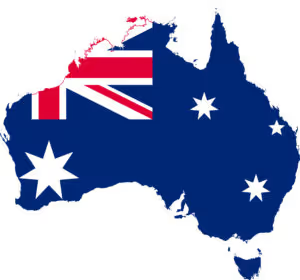
What do Australians think of immigrants?
Australia is another nation where emotions run deep on the matter of immigration. Earlier this year the prime minister announced vast immigration and naturalization reform, seemingly in response to a less welcoming attitude among his countrymen. Findings of a 2016 study from the Scanlon Foundation support this theory. Among its key takeaways:
- As many as six million Australians feel negatively about Muslims
- 20 percent of non-White Australians born abroad reported discrimination in 2016; more than a third of these felt they were being denied jobs or promotion because of their ethnicity
- The news isn't all bad: 66 percent of respondents said that receiving migrants from many nations makes Australia better
Will the United States continue to dominate global migration?
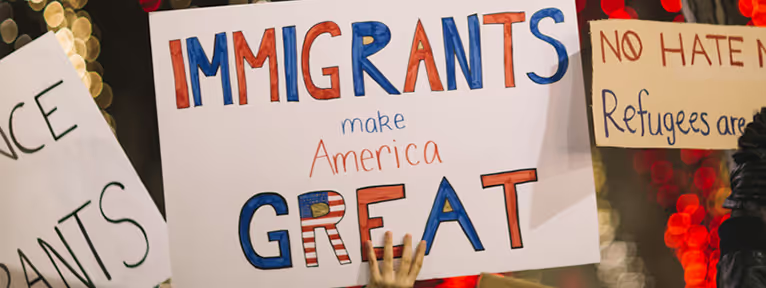
If one only looked at the historical data for an indication of this, the answer would be a resounding "yes." But immigration in a Trump-era America is uncertain at best. Members of Congress have put forth legislation that could change the categories of immigration and drastically reduce the number of visas granted across the board. Others are taking aim at certain family based categories. Confusion and uncertainty reign here; only time will tell.
Additional statistics and analysis provided by Pew Research Center and the Global Migration Data Analysis Centre, International Organization for Migration.
Trump's New Immigration Bill: What's The Point?
Understanding the basics of Trump's new immigration bill.
Last Updated: January 15, 2020
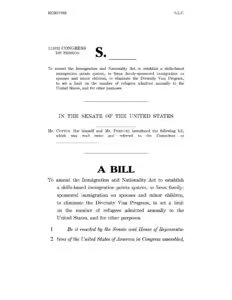
On August 3, 2017 Trump announced his support of S. 1720, a bill introduced by Senator Tom Cotton of Arkansas and co-sponsored by Senator David Perdue of Georgia, two Republicans. Trump said: “This legislation demonstrates our compassion for struggling American families who deserve an immigration system that puts their needs first and puts America first."He called it the “RAISE Act;” short for “Reforming American Immigration for a Strong Economy Act.”The RAISE Act was initially introduced to the Senate back in February and was referred to the Senate Judiciary Committee. It was then revised and reintroduced in August.Trump's adviser Stephen Miller and former adviser Steve Bannon promoted and helped shape the bill.
Many have dismissed this bill because it has not attracted any additional co-sponsors, and Republican leaders in Congress have no plans to vote on it in 2017. However, the bill remains relevant as it gives insight into the thoughts of the President and other leading figures on their ideal immigration system. Additionally, although this bill may not pass, it may influence another bill in the future.Section-by-section, the bill seeks to:
- Section 2: Eliminate the visa diversity lottery program
- Section 3: Enforce the 50,000 annual refugee cap. 84,995 refugees entered the US in 2016.
- Section 4: Narrow the meaning of “immediate relatives”.
- Section 5: Replace the employment-based immigration system with a points-based immigration system
- Section 6: Add one prerequisite for naturalization
These sections altogether would result in around a 30 percent reduction to green cards issued. Let’s take a look at each section in turn.(For more numbers on green cards, take a look at this frequently cited report.
SECTION 1: SHORT TITLE
It states the short title.This Act may be cited as the “Reforming American Immigration for a Strong Economy Act” or the “RAISE Act”.
SECTION 2: ELIMINATES THE DIVERSITY IMMIGRANT VISA PROGRAM
After Section 1, things start to get hairy quick. Section 2 eliminates the diversity visa program.The Diversity Immigrant Visa program, also known as the green card lottery, allows would-be immigrants to receive a United States Permanent Resident Card, or green cards, through a lottery system. This system was established in The Immigration Act of 1990.The lottery provides 50,000 green cards each year and aims to diversify the immigrant population in the United States. To do this it selects applicants from countries with low rates of immigration in the five years prior.Eligibility is determined by the applicant’s birth country, not country of residence. Section 2 eliminates all of that.
“(a) In General.—Section 203 of the Immigration and Nationality Act (8 U.S.C. 1153) is amended by striking subsection (c).”
SECTION 3: REMOVES EXCEPTIONS FOR THE ANNUAL REFUGEE CAP OF 50,000
Section 3 establishes a refugee cap of 50,000 that kind of, debatably, already existed. At the very least, it removes exceptions to the 50,000 rule.This section makes major changes to 8 U.S.C. 1157. 1157 says: the number of refugees who may be admitted may not exceed fifty thousand . . . unless the President determines . . . that admission of a specific number of refugees in excess of such number is justified by humanitarian concerns or is otherwise in the national interest.But that clause apparently only applied to a few years in the early eighties. Ever since then Presidents have been welcoming however many refugees they want.(Take a look here for refugee numbers.)Also, President Trump has tried to cap the refugee intake at 50,000 in various ways already. So again, at the very least, this bill eliminates the options for the President to raise the cap for “grave humanitarian concerns” or the “national interest.” The new code would read:
“(1) IN GENERAL.—The number of refugees who may be admitted under this section in any fiscal year may not exceed 50,000."
Also, an interesting change: special discretionary decision-making power is transferred from the Attorney General to the Secretary of Homeland Security. So the Secretary of Homeland Security would be able to admit any refugee who is not firmly resettled in any foreign country, is determined to be of special humanitarian concern to the United States, and is otherwise admissible as an immigrant.
SECTION 4: LIMITS THE REACH OF FAMILY SPONSORED VISAS
This section primarily narrows the meaning of “immediate relative.” It effectively removes family-visa pathways for siblings and adult children of U.S. citizens and permanent residents to apply for permanent residency status in the U.S. It limits the family path to spouses and minor children.It redefines “immediate relative” as spouse and children under 18 years old. Whereas before it included children up 21, parents, and siblings.
“Family-sponsored immigrants described in this subsection are qualified immigrants who are the spouse or a child of an alien lawfully admitted for permanent residence.”
It allows for 88,000 immigrants minus the number of aliens paroled that did not depart and did not acquire the status of an alien lawfully admitted. It also deals with some rather complicated things like how many of these visas are subject to country limitation and when the visa of a dependent parent can be extended.
SECTION 5: REPLACES THE EMPLOYMENT-BASED IMMIGRATION SYSTEM WITH A POINTS BASED IMMIGRATION SYSTEM
Section 5 establishes a point-system which would replace the employment-based system with the points based system. This is one of the more innovative or creative sections; the system is surprisingly simple. Notably, the caliber of immigrants accepted under the current employment-based system is already remarkably high. So, If the points-based system were implemented then a sufficiently large number of applicants would accrue enough points to maintain a large applicant pool — a large enough pool to keep the number of employment sponsored green cards the same.Raise keeps the current level of employment visas which is 140,000.
“(1) IN GENERAL.—The worldwide level of points-based immigrant visas issued during any fiscal year may not exceed 140,000."
The points system invites any qualifying applicant to apply for submission into the eligible applicant pool. Applicants apply online and pay a $160 fee. An applicant is eligible if they accrue over 30 points. The applicants with the highest point counts are then siphoned off the top every six months until 140,000 people are admitted.Selected applicants are invited to submit another application which would include valid documentation, an attestation from the prospective employer, the annual salary being offered, a declaration that the job position is new or vacant, health insurance records, and a fee of $345.If the applicant is accepted, spouses, minor children, and dependent adult children can also be issued a visa.In regards to the points, the goal is to accrue 30 points. Points are allotted by status in each category.
Would You Qualify for Legal Immigration to the U.S.?
Answer the following questions to find out:
Age:
- 0–17: Ineligible
- 18–21: 6 points
- 22–25: 8 points
- 26–30: 10 points
- 31–35: 8 points
- 36–40: 6 points
- 41–45: 4 points
- 46–50: 2 points
- 51 and older: No points
Education:
Points are awarded only for the highest degree obtained.
- US or foreign high school: 1 point
- Foreign bachelor’s degree: 5 points
- US bachelor’s degree: 6 points
- Foreign master’s degree in STEM: 7 points
- US master’s degree in STEM: 8 points
- Foreign professional degree (including MBA, JD, or MD) or doctorate in Stem: 10 points
- US Professional degree or doctorate in stem: 13 points
English Language Proficiency:
Points are awarded for decile placement in IETSL or TOEFL.
- 1st–5th deciles: 0 points
- 6th–7th deciles: 6 points
- 8th decile: 10 points
- 9th decile: 11 points
- 10th decile: 12 points
Extraordinary achievements
- Nobel Laureate or has received comparable recognition in a field of scientific or social scientific study: 25 points
- Earned an individual Olympic medal or placed first in an international sporting event within the last 8 years: 15 points
- None 0 points
Job Offer
Points are awarded for job offers with high monetary compensation.
- Annual salary 150%–200% of median household income of state: 5 points
- Annual salary 200%–300% of median household income of state: 8 points
- Annual salary 300% and above of median household income of state: 13 points
- No Job Offer 0 points
Investments
- Applicant agrees to invest $1,350,000 in a new commercial enterprise in the US: 6 points
- Applicant agrees to invest $1,800,000 in a new commercial enterprise in the US: 12 points
- No Investment 0 points
Family preference
- The applicant previously qualified for the once valid family preference visa category: 2 points
Requirement
- An applicant is ineligible if he doesn’t have a degree higher than a bachelor’s degree and he is not in the 6th decile or higher for English proficiency.
Spousal consideration
- If an applicant’s spouse would accrue higher points, then no change is made to the applicant’s points. However, if the spouse would accrue lower points, then 70% of the applicant’s points would be added to 30% of the spouse’s points, and this new number would be considered
Minimum Score: 30
You must be at least 18 years old and have at least 30 points to be eligible to apply for immigration, according to proposed legislation.
SECTION 6: CHANGES THE PREREQUISITE FOR NATURALIZATION
Section 6 mostly does some housekeeping to an already standing section of US code. However, at the end, it adds a term that disqualifies from naturalization people who have outstanding debts owed to the federal government.And that’s the RAISE Act explained section-by-section. We’ll see what bill comes next for immigration.
Canadian Birth Certificates & Green Cards: What You Need
Understanding Canadian birth certificates needed for green card applications.
Last updated: January 15, 2020
If you are from Canada and you are trying to get your green card you will need a specific copy of your birth certificate. You may be asking, "Which birth certificate will the USCIS accept for Canadian citizens?" or "Where to I get a copy of my Canadian birth certificate for a green card?" The following is a guide that will help you know which type of birth certificate is preferred by the USCIS and will be accepted with a green card, legal permanent residency application. Every year tens of thousands of Canadian-born immigrants go through the immigration process in the United States. At SimpleCitizen, we are proud of the fact that a large percentage of our customers hail from the Maple Leaf. Our friends from Canada enjoy special rules when obtaining visas, green cards and citizenship. Although some of the special rules make it easier for Canadian citizens to come to the United States they can cause some confusion as Canadians try to submit green card or citizenship applications. An essential and required piece of the green card application is a copy of the applicant’s birth certificate. This requirement is the source of a lot of confusion for Canadians trying to prepare an Adjustment of Status application for Legal Permanent Residency. Birth certificates in Canada are issued by the individual Province or Territory where the birth took place. There are basically two types of birth certificates that can be issued:
The Short Form or Small
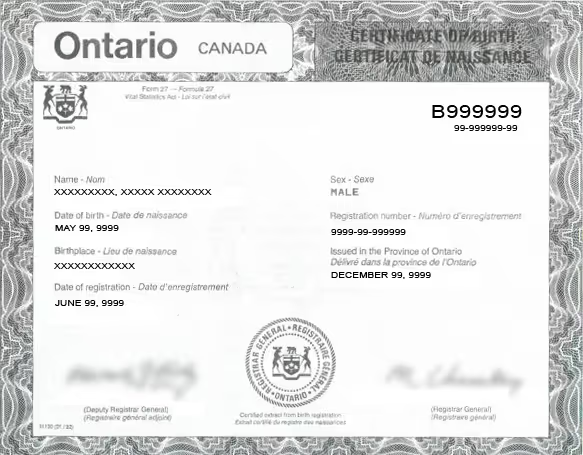
This certificate is printed on a small card. It is usually the size of a standard driver’s license and small enough to fit in a wallet (9.5 x 6.4 cm / 2.5 x 3.75 in). These certificates are not accepted by the USCIS or the DHS because they do not have required information such as the names of parents.
The Long Form, Large or Full-size

This certificate is a printed copy from the records of the province. It is usually on “currency-style paper stock” with intaglio border (21.6 x 17.8 cm / 7 x 8.25 in). These certificates are accepted by the USCIS and the DHS.There are specific types of birth certificates and each province has their own name for the certificate that is accepted by the USCIS and their own process for obtaining a copy. The following is a province-by-province guide for getting the right birth certificate attached to your green card application for the USCIS.
Alberta

If you were born in Alberta you need to attach a copy of your "large sized" certificate. If you don’t have a copy you can work with the Alberta Vital Statistics using a private Alberta Registry Agent. If you need information on official Registry Agents they are available online.
British Columbia
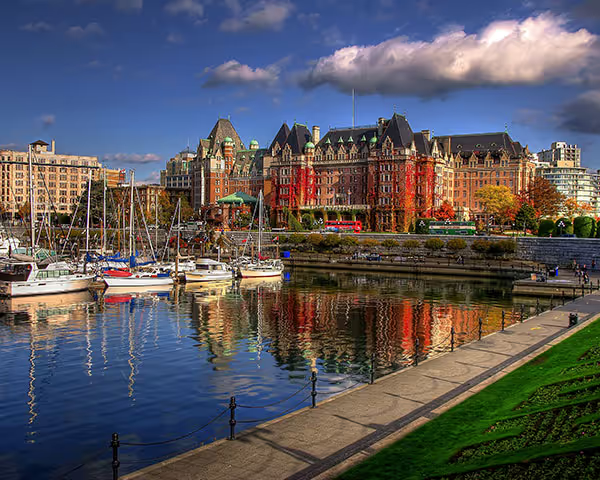
If you were born in British Columbia you need to attach a copy of your "large" certificate. If you don’t have a copy you can request one from the Vital Statistics Agency. They have offices in Victoria and Vancouver. You can also access copies through British Columbia Government Agents throughout the province. If you need information on official Government Agents, locations of Vital Statistics offices or mail-order instructions they are available online.
Manitoba

If you were born in Manitoba you need to include a copy of your "large" certificate. If you don’t have a copy you can obtain one from the Vital Statistics Agency. They have offices in Winnipeg (254 Portage Avenue, Winnipeg, 204-945-3701). If you need more information or mail-order instructions they are available online.
New Brunswick

If you were born in New Brunswick your immigration paperwork should include a copy of your "long-form certified copies" birth certificate. If you don’t have a copy you can obtain one from the Vital Statistics Office. Their office is located in Fredericton (435 King Street, Suite 203, tel: 506-453-2385). If you need more information or mail-order instructions they are available online.
Newfoundland and Labrador
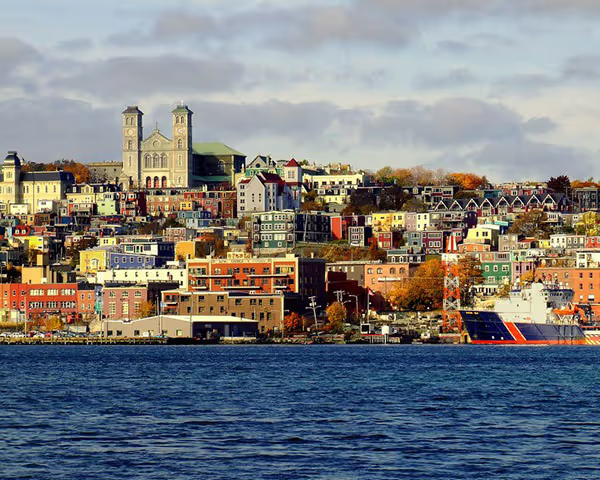
If you were born in Newfoundland and Labrador you need to attach a copy of your "long-form certificates" birth certificate. If you don’t have a copy you can obtain one from the Vital Statistics Division. Their office is located in St. John’s (5 Mews Place, tel: 709-729-3308). You can also request a copy via one of the Government Service Center locations around the province. If you need more information, locations or mail-order instructions they are available online.
Northwest Territories

If you were born in Northwest Territories you need to make a copy of your "restricted photocopy" or “framing” birth certificate. If you don’t have a copy you can obtain one from the Registrar General of Vital Statistics. Their office is the Registrar General of Vital Statistics in the Inuvik Office of the Department of Health and Social Services ( tel: 867-777-7420). You can also request a copy via mail written to:Registrar General of Vital Statistics, Government of the NWT, Bag 9 (107 MacKenzie Road/IDC Building, second floor), Inuvik, NT, X0A 0T0 (fax: 867-777-3197).
Nova Scotia
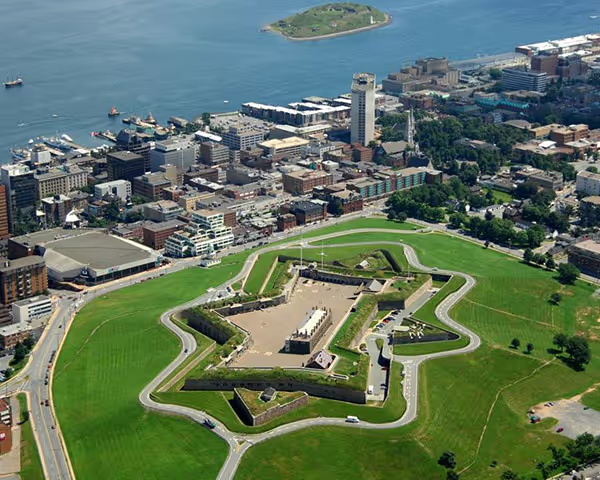
If you were born in Nova Scotia your immigration paperwork should include a copy of your “large" birth certificate. If you don’t have a copy you can obtain one from the Vital Statistics Office. Their office is in Halifax (Joseph Howe Building, 1690 Hollis Street., ground floor, tel:902-424-4381). If you need more information or how to order via mail they are available online.
Nunavut
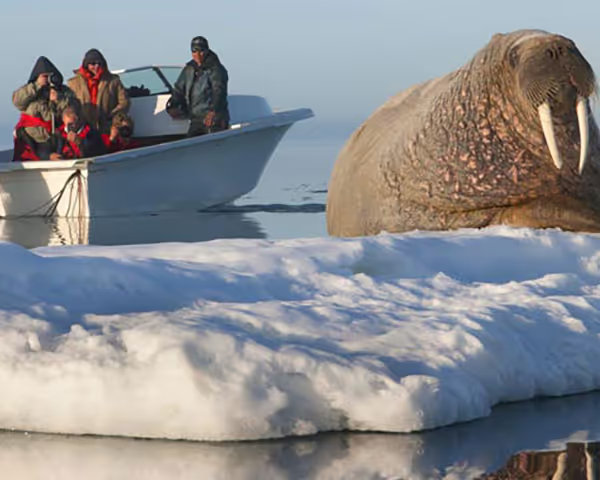
If you were born in Nunavut you need to attach a copy of your “large" birth certificate. If you don’t have a copy you can obtain a certified copy from the Vital Statistics Division. Their office is based out of the Kivalliq Regional Office of the Department of Health and Social Services (tel:867-645-2171). You can also request one via mail by writing to: Social Services, Bag 3 RSO Building, Rankin Inlet, NU, X0C 0G0 (fax: 867-645-2580).
- Note: Before April 1, 1999 Nunavut was part of the Northwest Territories. So if you were born in the Nunavut region of Northwest Territories before 1999, you should request your birth certificate from the Northwest Territories Registrar General of Vital Statistics.
Ontario

If you were born in Ontario you need to attach a copy of your "large" birth certificate. If you don’t have a copy you can obtain a certified one from the Office of the Registrar General. Their office is located in Toronto (Macdonald Block, 900 Bay Street, second floor, tel: 416-325-8305). You can also request a copy via one of the Ontario Land Registry Offices and Government Information Centers located throughout the province. If you need more information, locations or mail-order instructions they are available online.
Prince Edward Island

If you were born in Prince Edward Island and are completing your immigration paperwork you need to attach a copy of your "framing size" birth certificate. If you don’t have a copy you can obtain a certified copy from the Office of Vital Statistics. Their office is located in Montague (126 Douses Road, tel:902-838-0080). There is also an office in Charlottetown (16 Garfield Street, tel:902-368-6185). If you need more information, locations or mail-order instructions they are available online.
Quebec
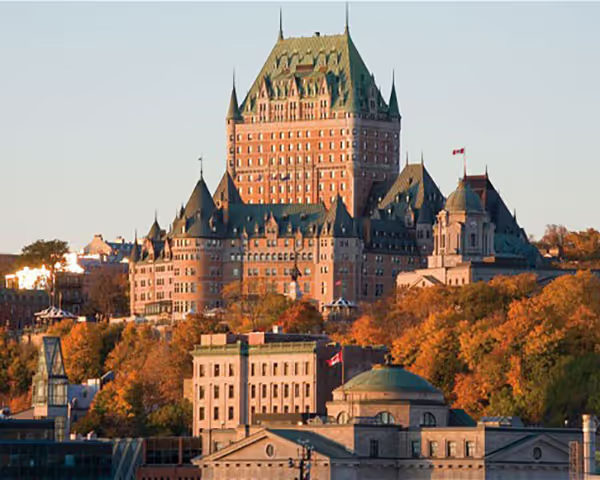
If you were born in Quebec you should attach a copy of your "certified copies of an act" birth certificate. If you don’t have a copy you can obtain a certified copy from the Direction de l' Etat Civil. Their office is located in Montreal (2050, rue de Bleury, sixth floor, tel:514-864-3900). There is also an office in Quebec City (2535, boulevard Laurier, Ground Floor, Sainte-Foy, tel:418-643-3900; fax:418-646-3255). If you need more information, locations or mail-order instructions they are available online.
Saskatchewan

If you were born in Saskatchewan you should attach a certified copy of your "frame" birth certificate. If you don’t have a copy of this birth certificate you can request a copy of a registration from the Vital Statistics Office in Regina (1942 Hamilton Street, tel:306-787-3251).
Yukon Territory

If you were born in the Yukon Territory you should obtain a copy of your "large" birth certificate. If you don’t have one you can request certified copies of a registration from the Vital Statistics Agency in Whitehorse (204 Lambert Street, fourth floor, tel: 867-667-5207) or a Yukon Territorial Agent. Further information, including mail-order instructions, is available online.Hopefully this article has helped you understand exactly what Canadian documents you need to prepare and where you can find them when tackling immigration paperwork. Please share this article if you know someone from Canada that can use SimpleCitizen.
Perhaps it may be found within a different category.
